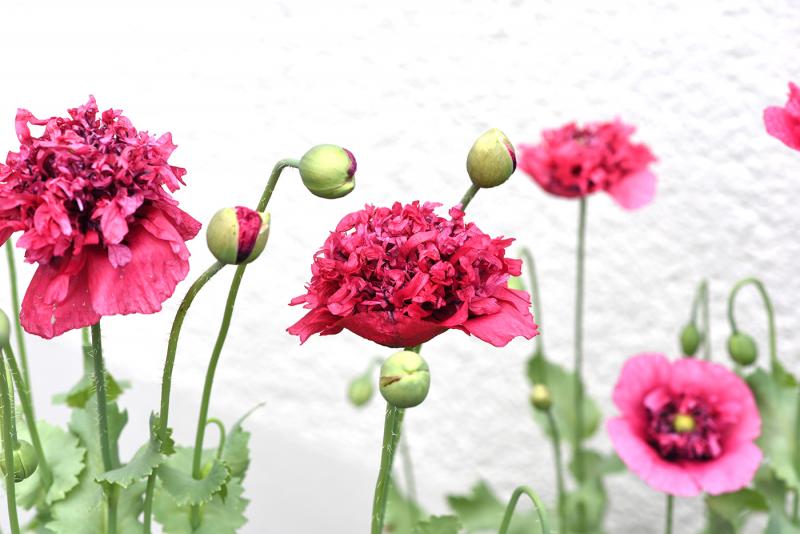Plant breadseed poppies before the snow comes
Dope once meant a sauce or any thick liquid, but by 1889, dope came to mean "narcotic drug," from the practice of smoking semi-liquid opium. And a dope fiend is a victim of that opium habit.
All this from a wispy, delicate-looking flower whose seeds you can buy at the supermarket, the breadseed or lettuce-leaf poppy (Papaver somniferum). This innocent food source blooms with thin flowers that look like they are made of tissue paper. The 4- to 5-foot-tall plants flower in single and double blooms of pink, purple, red and white.
Hungarian Blue Breadseed Poppy is the most popular home variety, bearing two-toned violet and magenta flowers. It yields large pods filled with delicious, nutty seeds for baking. Some other outstanding varieties include Lauren’s Grape, Chima Family Heirloom, Pepperbox, and Giant Rattle. They all bloom from late spring into early summer.
Direct seeding is recommended for planting poppies, because their delicate roots do not like to be disturbed. Sow the seeds in late fall, winter, or very early spring, since they need cold to germinate. The best time to plant breadseed poppies in the Northeast is from October through November.
Prepare a smoothly raked garden bed, and sprinkle the poppy seeds evenly. Poppy seeds are tiny, and many gardeners mix sand with them before sowing, which helps scatter the seeds more evenly. Besides going through a cold period, poppy seeds also need light to sprout, so gently press them into the soil without covering them. Breadseed poppies get too large to grow in pots or containers.
Water gently, being careful not to flood the bed and wash away the seeds. If birds try to eat the newly planted seeds, use row covers or sheets. Poppies tolerate poor soils and do their best with no additional fertilizer. After planting in the fall, the breadseed poppies will stay small or not even sprout over the winter. In the spring, you will find many tiny, blue-green seedlings that shoot up quickly as soon as the weather begins to get warm.
After your breadseed poppies sprout, you may find seedlings growing too close together. Even though poppies can tolerate crowding, they will bloom better and provide more seeds if thinned properly. To avoid accidentally pulling up plants, use scissors to carefully snip off the extra seedlings, leaving one plant every 6 to 8 inches.
Weeding the flowerbed when the plants are young will keep the poppies from being smothered by weeds. Poppies will continue to bloom until they set seed. To encourage more flowers, cut off the spent blooms.
At the end of the season, breadseed poppies will form seed pods that gradually fade from green to brown. The large, round seed pods are often dried and used in everlasting bouquets.
For the best-tasting seeds, let the seed pods stay on the plant until they are completely dry before picking them for baking. And yes, the poppy seeds that you buy at the grocery store will often grow when planted. Just grow them for seeds and not for opium, and don't be a dope about it.


















































